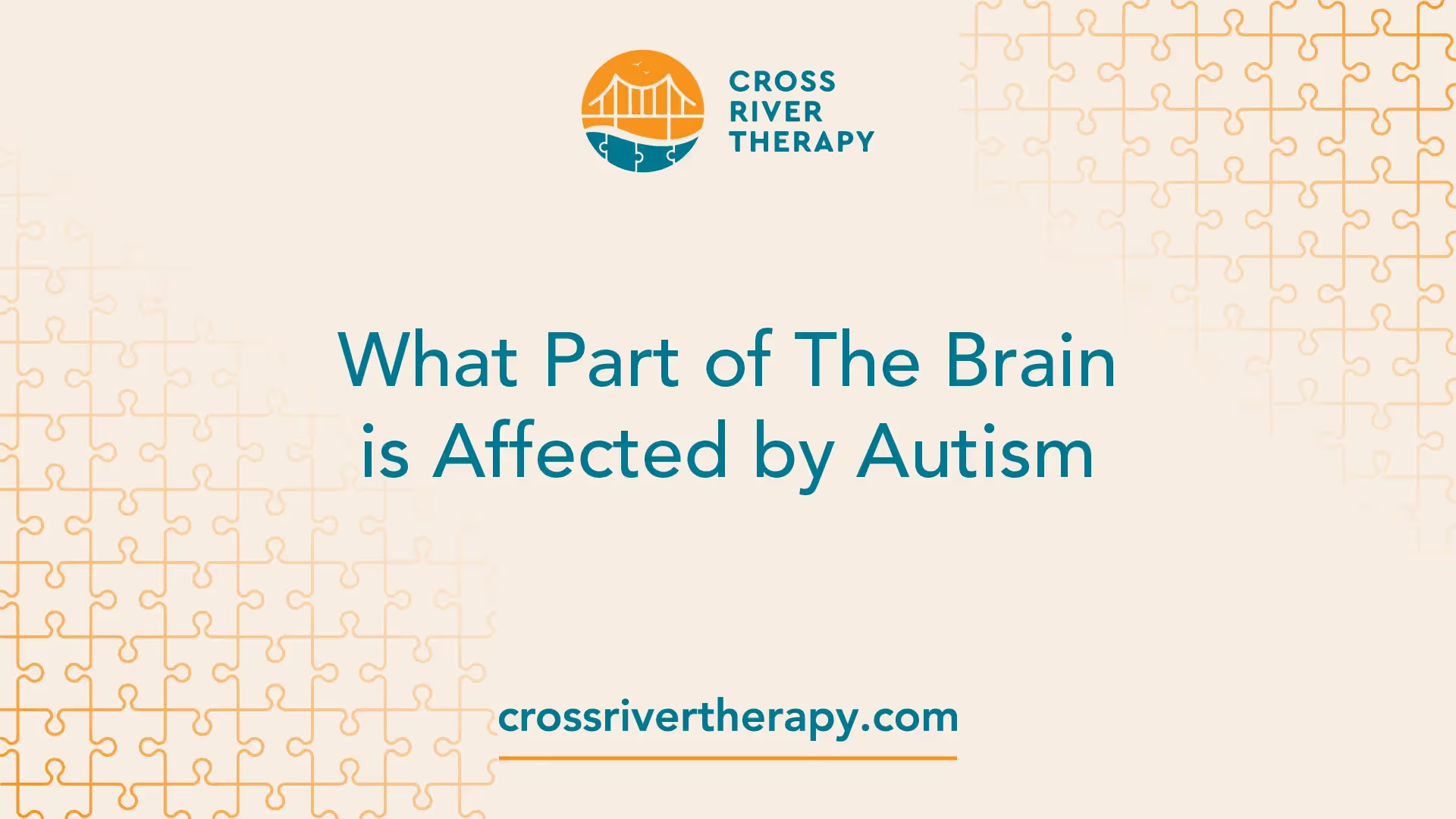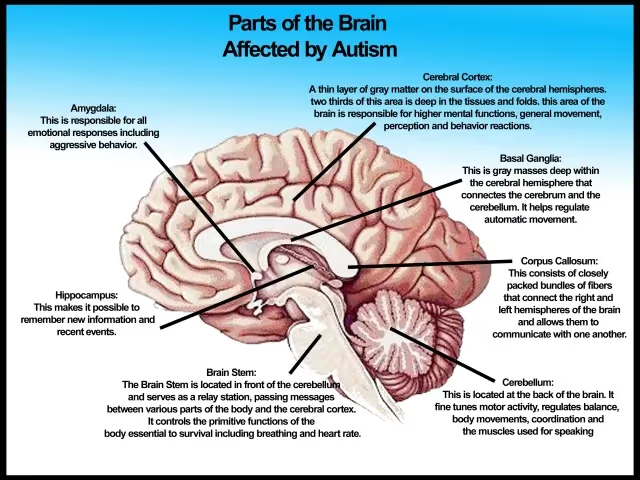What Part of The Brain is Affected by Autism
Unravel what part of the brain is affected by autism, understanding its impact, and advances in research.
Understanding Autism and the Brain
To answer the question, 'what part of the brain is affected by autism', it's important to delve into the complex relationship between autism and the brain, looking at the various regions that are impacted and how they contribute to the characteristics of this condition.
Autism: An Overview
Autism, or autism spectrum disorder, is a neurodevelopmental disorder characterized by difficulties with social interaction, communication, and repetitive behaviors. The symptoms of autism can range from mild to severe, and the condition is often associated with a variety of co-occurring mental and physical health issues.

While the exact cause of autism is unknown, it's widely accepted that both genetic and environmental factors play a role in its development. Studies have shown that certain brain structures, including the amygdala, the hippocampus, and the frontal and temporal lobes, are affected by autism, leading to alterations in brain function and connectivity.
The Brain's Role in Autism
Several key regions of the brain have been0 implicated in autism, each playing different roles and contributing to the unique characteristics of the condition.
Firstly, the amygdala, a region involved in emotion and social behavior, tends to be larger in children with autism compared to typically developing children. This change in volume may affect emotional processing and responses to social cues, leading to difficulties with social interaction often seen in autism [1].
The hippocampus, which is critical for memory and navigation, is another brain structure that may be implicated in autism. Differences in the size and shape of the hippocampus in individuals with autism could impact their cognitive abilities, particularly those related to memory [1].
The frontal and temporal lobes of the brain also show differences in individuals with autism. The frontal lobe, involved in decision-making, problem-solving, and social behavior, and the temporal lobe, which plays a role in language and memory, may exhibit differences in cortical thickness in individuals with autism. This could contribute to the communication difficulties and repetitive behaviors often associated with the condition [1].
Finally, alterations in the connectivity between different brain regions have been identified in autism. Changes in how the brain's regions communicate with each other can impact various cognitive functions and social abilities, providing further insight into the complexities of autism.
In summary, while autism is a highly complex and individualized condition, understanding the role of the brain in autism provides valuable insight into its characteristics and potential treatments.
Key Brain Structures in Autism
To comprehend what part of the brain is affected by autism, it's important to understand the role of certain key brain structures. This includes the amygdala, hippocampus, and the frontal and temporal lobes.

The Amygdala and Autism
The amygdala, a brain region involved in emotion and social behavior, is significantly affected by autism. Studies have shown that the volume of the amygdala tends to be larger in children with autism compared to typically developing children [1]. Moreover, changes observed in the amygdala have been linked to the development of anxiety in autistic individuals, with evidence pointing towards distinct types of anxiety specific to autism.
The Hippocampus' Role
The hippocampus, another vital brain structure crucial for memory and navigation, may also be implicated in autism. Research indicates differences in both the size and shape of the hippocampus in individuals with autism compared to neurotypical individuals [1]. These differences may contribute to the unique cognitive and behavioral characteristics observed in individuals with autism.
The Frontal and Temporal Lobes
Research also points towards differences in the cortical thickness of the brain, particularly in the frontal and temporal lobes, in individuals with autism. The frontal lobe, responsible for decision-making, problem-solving, and social behavior, and the temporal lobe, which plays a role in language and memory, are both implicated in autism [1].
These differences in key brain structures associated with autism provide valuable insights into the neurological underpinnings of this complex condition. Further research is necessary to fully understand these changes and their implications for individuals with autism.
Connectivity Changes in the Autistic Brain
Understanding what part of the brain is affected by autism involves looking beyond individual structures and examining the connections between these structures.
Changes in Brain Connectivity
Alterations in the connectivity between different brain regions have been identified in individuals with autism. Specifically, studies have found disrupted functional connectivity between the frontal lobe and other areas in the brain, such as the temporal lobe, amygdala, and cerebellum.
Furthermore, research has revealed patterns of long-range under-connectivity and local over-connectivity between specific brain regions and circuits in individuals with autism spectrum disorders (ASD), as evidenced by fMRI studies.
These changes in brain connectivity are thought to play a critical role in the cognitive and behavioral characteristics associated with autism.
Impact on Cognitive Functions and Social Abilities
The changes in brain connectivity observed in individuals with autism can have significant impacts on various cognitive functions and social abilities. Specifically, research suggests that deficits in the frontal lobe and its connections with other brain areas are associated with the social communication difficulties observed in individuals with ASD.
Moreover, changes in the white matter integrity of frontal-posterior connections have been linked to social communication impairments in individuals with ASD. These changes may contribute to the difficulties with social interaction and communication that are often observed in individuals with autism [3].
Understanding these connectivity changes and their impacts can provide important insights into the complex neurobiology of autism and may help guide the development of more effective interventions and treatments for individuals with ASD.
Link Between Anxiety and Autism
There has been significant research conducted to understand the correlation between anxiety and autism, with a particular focus on the role of the amygdala and the genetic influences at play.
The Amygdala and Anxiety in Autism
The rate of anxiety in autistic children has been reported at 69%, significantly higher than the rate of 8% observed in non-autistic children. These figures suggest a pronounced link between autism and anxiety that is likely mediated by specific brain regions.
The amygdala, a key brain structure involved in processing emotion and fear, has been implicated in this link. Dysregulation of the amygdala has been associated with both autism and anxiety disorders.
Further, changes in the amygdala have been found in autistic children and these changes have been connected to the development of anxiety. A long-term study involving hundreds of brain scans provided evidence of distinct types of anxiety specific to autism. Autistic children with traditional anxiety exhibited significantly larger amygdala volumes compared to non-autistic children, while those with autism-distinct anxieties showed significantly smaller amygdala volumes.
Interestingly, 15% of the participants in the study had only distinct autism-specific anxiety, underlining the importance of acknowledging and understanding different types of anxiety in autism that may require specialized treatment.
The Role of Genes in Autism and Anxiety
The link between autism and anxiety is not solely confined to brain structures. Indeed, genetics play a crucial role in determining how these conditions manifest and interact, and research is ongoing to understand the complex interplay of genes in these disorders.
While the exact genetic mechanisms remain elusive, it is clear that the interaction of multiple genes contributes to the development of both autism and anxiety. Understanding these genetic factors will be instrumental in developing new treatments and interventions for individuals who experience both autism and anxiety. As our understanding of the genetic underpinnings of these conditions improves, it is hoped that we will be able to provide more targeted and effective support for those affected.
Age-Related Differences in Autism
In order to provide a comprehensive understanding of what part of the brain is affected by autism, it is crucial to examine the age-related differences that occur in individuals with autism. These differences encompass changes in gene expression associated with brain aging, as well as distinct variations between sexes.
Gene Expression and Brain Aging in Autism
Studies have indicated that genes involved in inflammation, immune response, and neural connectivity behave differently in the brains of individuals with autism. These differences, linked to brain aging, begin in childhood and persist throughout life. Age-related differences in gene expression were particularly observed in genes connected to synaptic activities, immunity, and inflammation pathways. Alterations in GABA signaling, which is involved in controlling neuronal hyperactivity, were also noted in the study.
Furthermore, postmortem studies have found neuroanatomical changes in the brains of individuals with autism spectrum disorder (ASD), including smaller cell size and increased cell density in certain brain regions such as the hippocampus, limbic system, entorhinal cortex, and amygdala. These changes in cell size and density were observed across all ages of individuals with ASD [6].
Sex Differences in Autism
Understanding the impact of autism on the brain also necessitates the exploration of sex differences. Findings indicate that there are significant variations in cortical and subcortical measurements in ASD postmortem brain tissue, describing aberrant organization such as small cell size, increased packing density, and decreased cortical thickness. These differences may contribute to the distinct behaviors and symptoms exhibited by males and females with autism, and further research is essential to fully understand the implications of these findings.
In summary, age and sex are significant factors that contribute to the manner in which autism impacts the brain. Further research is needed to provide a more comprehensive understanding of these differences, and their implications on the diagnosis, treatment, and support of individuals with autism.
Mirror Neuron Mechanism and Autism
In the quest to understand what part of the brain is affected by autism, one area that has been closely studied is the mirror neuron mechanism. This mechanism, located in the motor system, plays a critical role in understanding others' actions and behaviors.
Understanding the Mirror Neuron Mechanism
The mirror neuron mechanism (MNM) is situated in the motor system of the brain. It plays a fundamental role in action understanding, allowing the brain of the observer to generate representations similar to those of the agents whose actions are observed. This paradigmatic conceptual shift in cognitive neuroscience and psychology has led to a new understanding of the motor system as a crucial system for understanding the behavior of others.
One way to observe the functioning of the mirror neuron system is through the mu rhythm - an EEG measure of resting motor neurons. Mu rhythm is typically suppressed by input due to action observation or movement execution, providing insight into the functioning of the mirror neuron system.
The Role of the Mirror Neuron System in Autism
While consensus has not been reached on a universally accepted theory to explain the underlying mechanisms of Autism Spectrum Disorders (ASDs), some theories emphasize the role of the mirror neuron system. These theories highlight social difficulties and deficits in imitating and understanding the actions of others as key characteristics of ASDs.
It's suggested that sensory, motor, and social processes in ASDs might be more interconnected than traditionally thought. This interconnectedness implies that alterations in the mirror neuron system could potentially impact sensory processing, motor skills, and social abilities, thereby contributing to the symptoms observed in individuals with ASDs [7].
In conclusion, while the mirror neuron system is not the only area of the brain impacted by autism, it plays a vital role in understanding the complex neural dynamics of this condition. Further research into the functioning and potential alterations of this system may provide new insights into the diagnosis, treatment, and understanding of autism.
References
[1]: https://www.spectrumnews.org/news/brain-structure-changes-in-autism-explained/
[3]: https://www.frontiersin.org/journals/neuroscience/articles/10.3389/fnins.2015.00408/full
[4]: https://www.ncbi.nlm.nih.gov/pmc/articles/PMC8998980/
[5]: https://health.ucdavis.edu/news/headlines/uc-davis-study-uncovers-age-related-brain-differences-in-autistic-individuals/2023/03



